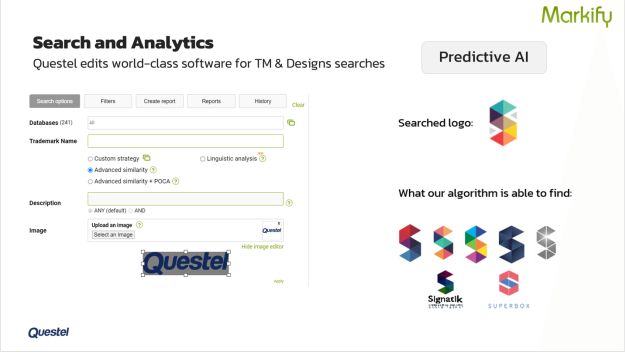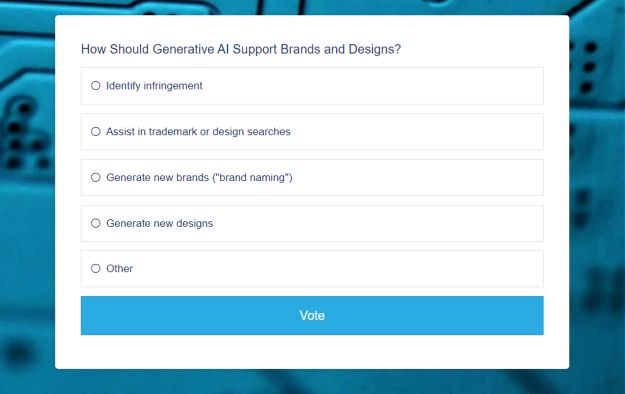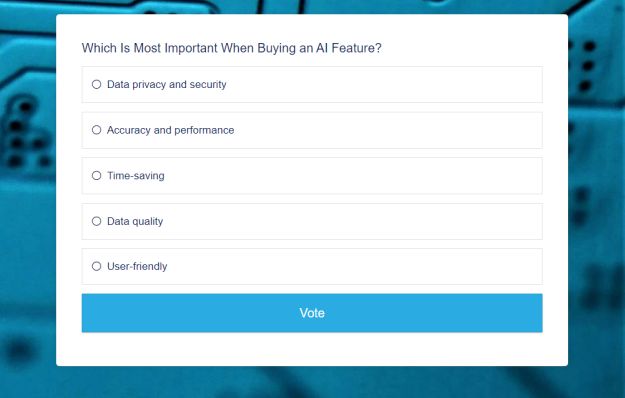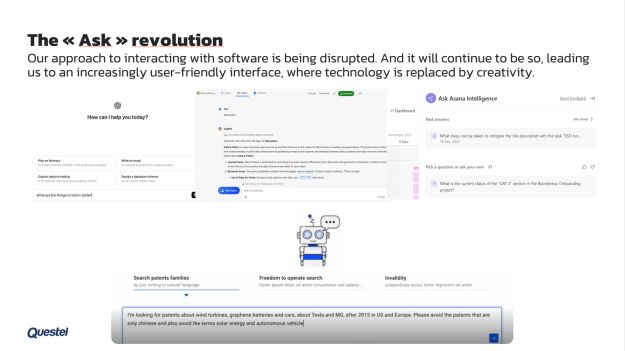AI-based tools, using "Predictive" AI, are already revolutionizing how we search and watch trademarks and designs but, with "Generative" AI, there is lots more to come. Discover how Questel has integrated AI algorithms into our Markify Clearance and Watch Platform and where the software and its capabilities may evolve next.
When we used to talk about artificial intelligence (AI), the term would conjure up images of futuristic robots performing traditionally human tasks. These days, we understand AI is more about adding efficiency through automation and, in the case of Generative AI, offering a new route to creativity through deep learning.
Intellectual property (IP) is a sweet spot for artificial intelligence (AI) from both perspectives. Ours is an industry that has been powered traditionally by paper-based and manual tasks, so there is massive potential for AI-based workflows to ease day-to-day administration, reduce risk, and improve efficiency. Through Generative AI, we can also harness data to increase insight, create reports, and generate first drafts of documents, "smart" contracts, emails, and even IP applications.
In our recent webinar, 'AI in IP – Generative AI, Beyond a Technological Change,' we looked at how AI-based technologies are revolutionizing how we manage, maintain, and capture IP assets. Here, we summarize the discussions around AI and trademarks, designs, and copyright (click here to watch this part of the webinar).
AI and Trademarks: From Predictive to Generative AI
Have you ever considered using Generative AI to automate and enhance the creation of unique logos and product designs? Our world-class Markify Clearance & Watch Platform uses Predictive AI to search for identical images and automatically identify similar logos.

The image algorithm harnesses a combination of several state-of-the-art deep learning models, including neural networks and large language models (LLMs), to pinpoint identical and similar images that may represent barriers to registration.
However, this is only the start of the possibilities for AI and trademarks. Whereas Predictive AI leverages historical data to forecast future outcomes, Generative AI focuses on creating new content using the same or similar deep learning models. In other words, we could use AI to automate and enhance the creation of unique logos, brand names, and product designs, assist in trademark search, and proactively identify infringement.
- Generative AI and Brand Naming
With Generative AI, for example, you could prompt the tool to create "A brand composed of text and a logo, with bright colors to suggest adventures, ecology, and nature awareness, and to link to Europe and tradition." The AI algorithm would propose some cool logos as the basis for your designer to work on or be inspired by. In addition, you could inject some rules into the algorithm to ensure the logo is not too detailed or vague—i.e., everything you need to make the logo a robust trademark.

- Trademark Search Assistant
Generative AI could provide a trademark search assistant to help you search brand names effectively. For example, you could make the search and registration process more efficient by asking, "What association do you get from the trademark name 'cinema?'," and the tool would identify the relevant Nice Classes of Goods and Services.

- Identify Infringement
Finally, Generative AI could identify infringement online by automatically searching images on websites and e-commerce marketplaces, an otherwise labor-intensive task. The algorithm could further streamline this process by quickly detecting the differences, ranking results in order of priority, and prompting the necessary next steps.

AI and Trademarks: Generative AI, Trademarks, and Designs
When asked which would be the most useful way for Generative AI to contribute to brands and designs, most participants (41%) in our recent webinar highlighted the ability of the algorithm to identify infringement. This was followed closely by assistance in trademark and design searches (36%), the ability to generate new designs (13%), and brand naming (8%). Do you agree?

Create a Poll
Overcoming Copyright Complexity with Generative AI
Another key area where Generative AI could prove useful in the future is copyright—or, more specifically, compliance with copyright laws.
As the use of AI-generated content tools, such as ChatGPT and DALL·E 2 continues to increase, it will become even more important to ensure that you're not inadvertently infringing third-party copyright. A Generative AI tool could assist by:
- Identifying and ensuring proper use of licensed materials (Creative Commons, GNU, Apache...);
- Acknowledging fair use and exceptions;
- Creating alerts and safeguards to avoid infringement; and
- Conducting copyright clearance before use.
→ To find out more about additional uses of Generative AI for patent and trade secret management, watch our on-demand webinar 'AI in IP – Generative AI, Beyond a Technological Change.'
AI and Trademarks: Integrating Generative AI into Your IP Operations
Given the vast potential Generative AI holds for the IP sector, the question is not whether but how to integrate AI-generated tools into organizations and workflows.
When we asked the participants of our recent webinar what was most important when deciding to buy or integrate an AI feature, 40% said that accuracy/performance was the most crucial, followed by data privacy and security (25%), time saving (22%), data quality (10%) and usability (3%).

Create Polls
AI and Trademarks: Join the "Ask" Revolution
From Predictive AI to Generative AI, how we interact with software and information is being increasingly disrupted at home and work, and this trend will not go away. That's why Questel is investing in AI capabilities in our software tools.
A user-friendly interface may not be the main priority of our users at present, but it is something that we are focusing on in our development roadmap. As we become increasingly used to searching web browsers, ChatGPT, and similar tools using natural language, we believe that it will be only a matter of time before our users expect to interact with our IP software in the same way.

Data Security and Privacy at Questel
When it comes to IP, data security and privacy are paramount, so our compliance and certifications are important, too. Questel is ISO 27001 (Information security, cybersecurity, and privacy protection) certified and compliant with GDPR data retention and encryption rules and procedures. Like all our AI tools, our AI and trademarks features use only public data (i.e. no client data) to train, and all client data is hosted in private data centers in Europe.
AI and Trademarks: What's Next?
Due to their potential to increase efficiency and lower risk, IP represents an exciting sweet spot for automation and AI technologies. Moving forward, we expect AI to deliver incredible support in analyzing and comparing trademarks, designs, patents, and copyright works, and assisting in IP infringement evaluation.
In addition, Generative AI and other AI techniques will help IP professionals deal with complex and repetitive IP docketing tasks, assist them in creating and safeguarding assets, and even ensure compliance with copyright laws for AI-generated content.
As a tech leader in the IP industry, Questel is committed to providing the best of AI to all IP practitioners. To find out more about our holistic and responsible approach to AI integration, watch our recent webinar, download our eBook 'How AI is Transforming IP Management for Good', visit our dedicated web page Questel.ai, or get in touch with our experts on AI and trademarks.
The content of this article is intended to provide a general guide to the subject matter. Specialist advice should be sought about your specific circumstances.
